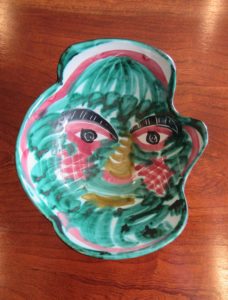

I want to share with you the latest additions to my collection of midcentury modern European pottery. All were ebay finds and so unique.
1. Imre Bedo pitcher

First up is this rare 1940s studio pottery pitcher signed by Hungarian artist Imre Bedo. Its incised design of a bird, bordered in banded diamonds, is done in art deco style. I watched this diminutive pitcher for over a year on ebay before receiving and accepting a 25-percent discount offer from the seller in the Netherlands.
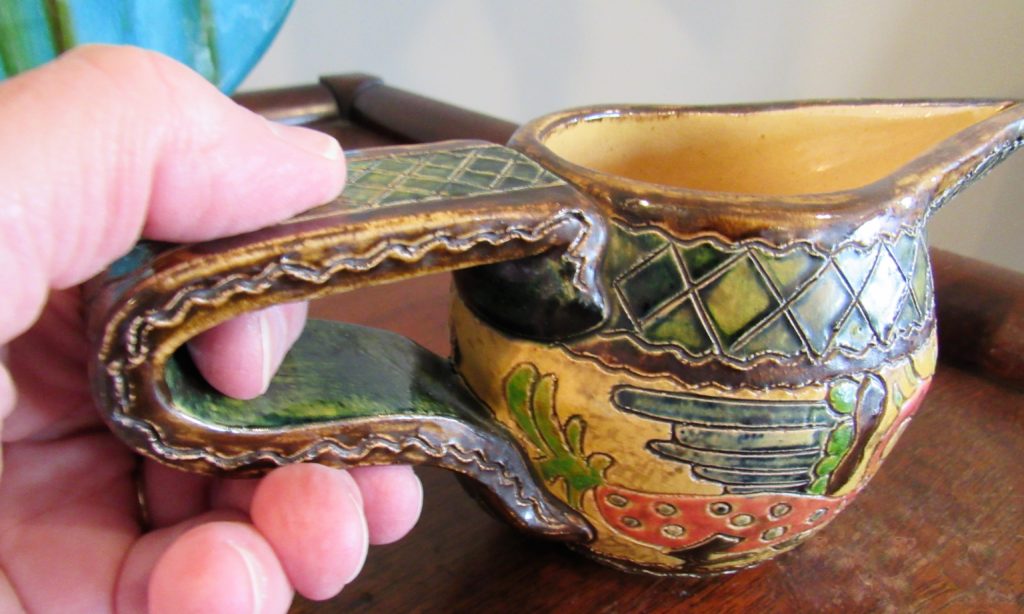
I love the unusual shape of the pitcher with its horizontally exaggerated spout and handle. It’s hard to believe that at only 3 1/2 inches tall and nearly 8 1/2-inches wide it stands securely upright. But the oddness of the proportions are part of makes it so special. That and the vibrant green, coral and mustard colors of the glazes.

Holding the pitcher is a joy, too, with its detailed incising. Everywhere you touch is texture.

I’ve chosen to display this along with two other vintage pieces I’ve had for some time.
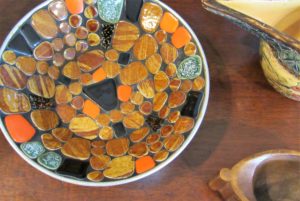
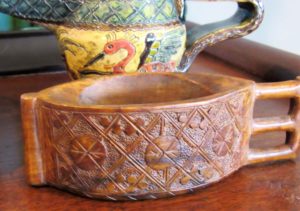
The tiled bowl is midcentury Japanese. The intricately hand-carved teak wedding cup–or kuksa–is traditionally used by a bride and groom during the wedding ceremony when both drink out of the same cup, symbolizing sharing a life together. Although typically a Scandinavian tradition, this cup was described by the seller as West German.
2. Tito Corti/Figlio bowl
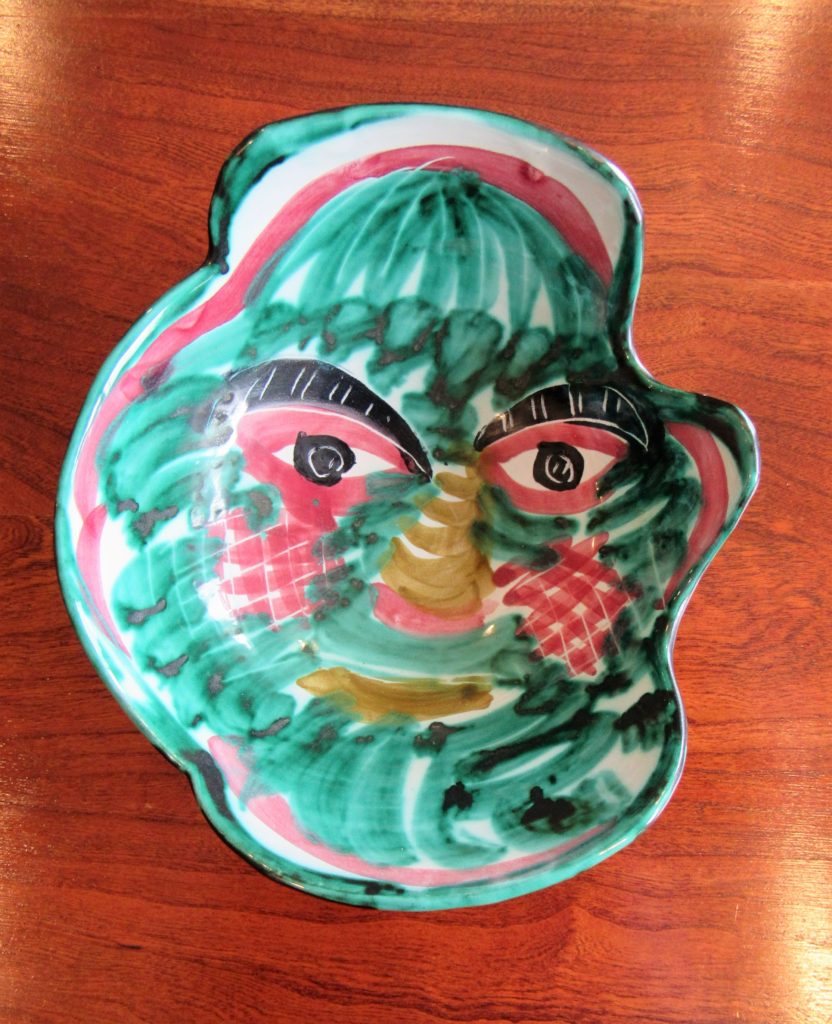
I also received a 25-percent discount offer from the same seller for this 1950s Italian bowl in the abstract form of a mask and attributed to Tito Corti. I had been watching it almost as long as the pitcher. Only the shipping cost was holding me back buying both pieces, but because I bought two at once, both shipped for the price of one.
Right now I’m displaying the bowl on my coffee table, but it would look great hung on a wall, too. Its lovely turquoise green, berry, ochre, and black colors work well in my living room, and I like seeing its quirky smile whenever I sit on the sofa. “Alla Moda,” as midcentury Italian pottery is called–is often splashy, colorful and whimsical.
3. West German wall vase
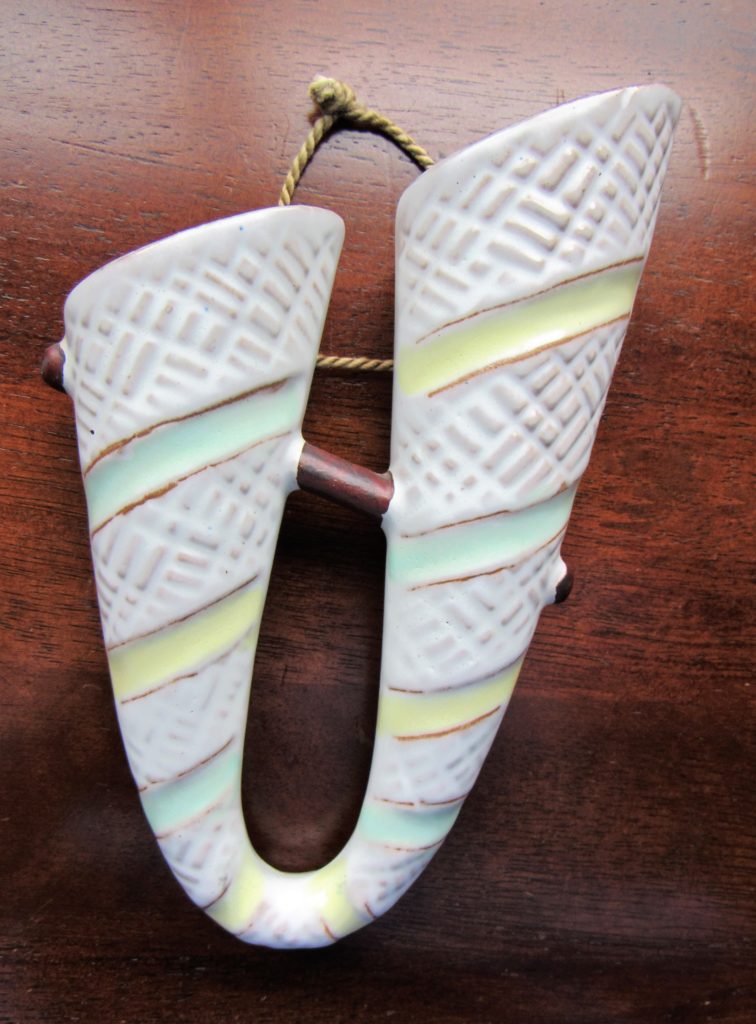
I loved this wall vase because it sports two horn-shaped receptacles. The red-brown clay shows through the glaze in spots, revealing a basketweave-type pattern in the white areas. The alternating pastel yellow and mint green diagaonal stripes are smooth and a bit concave.

I plan to hang it alongside two others I’ve been hoarding for some time. I just can’t figure out WHERE. It has to be somewhere they’re unlikely to be bumped into. Maybe I’ll stop listening to my husband telling me, “It’s too much,” one of these days and just drive the nails into the wall. I think they’d look pretty with air plants, dried flowers or live ones from my garden.
The new one is perhaps made by Carstens, Roth or Ruscha, as all used brown-red clay and molded markings. Carstens used the configuration “W-Germany,” as my vase has, but usually included its double-house mark, which my vase hasn’t. So who knows? I just know I like it.

The other two wall vases–not new to me though I’ve yet to use them–are also West German. The crescent-shaped one was identified as 1970s Dumler & Breiden; its mint-green-glazed interior matches the striping on the new one.
The clog- (or peanut-) shaped vase was identified as 1950s, maker unknown, though it could be Ubelacker. It gets its orange interior color from the unglazed red clay used to make it. The outsides of both are heavily incised, underglazed in a pale yellow, and overglazed in brown.

You may be puzzled by the designation of items as West German, since West Germany no longer exists. But that’s precisely what makes such items collectible. That and, of course, their beauty.
After World War II and the division of Germany into east and west (until reunification in 1990), there was an explosion of creativity in the potteries, throughout Europe but particularly in Germany, with many famous artists designing pieces for mass production.
I love pottery and collect pieces from all over the world and different time periods, though the builk of my collection is West German and from the midcentury period. I tend to look for continuity of style, even in modern pieces. Two favorite “midcentury” modern pieces in my collection are by American potters and produced since 2010.
Collections are what give a home depth and interest. The trick is finding what you love. Learning how to curate your collection and display it to advantage in your home follows.
If you want more…
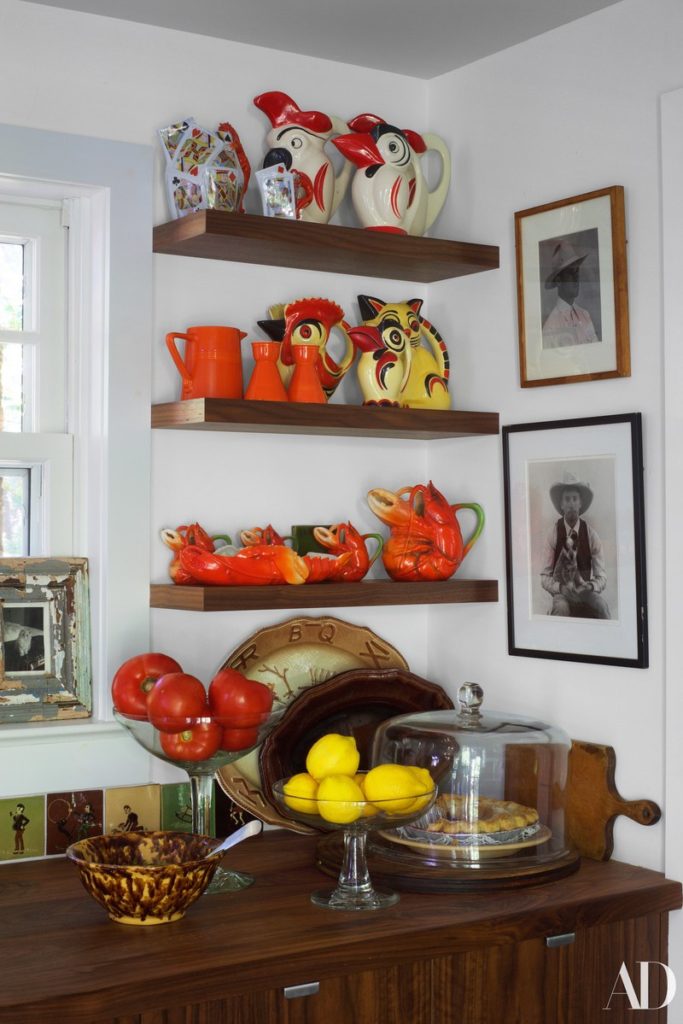
When I first got interested in midcentury modern design about 10 years ago I started looking for authentic vintage home accents on ebay. The first several items I bought I ended up reselling later when I became more knowledgeable. That’s the great thing about collecting vintage items: You can always resell to buy what you want more.
Even after I started focusing on midcentury modern European pottery–often called “fat lava” on ebay for its thick glazes–I’ve bought and resold many a vase I tired of after finding one I liked better. And I always made money on the sales.
Here are some links to related articles that may help you get started collecting:

